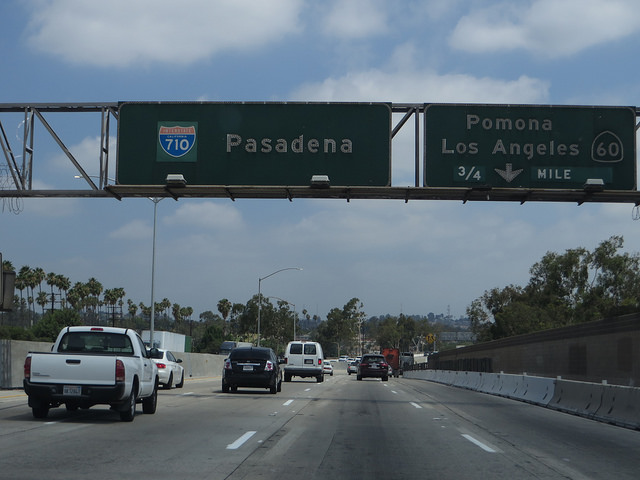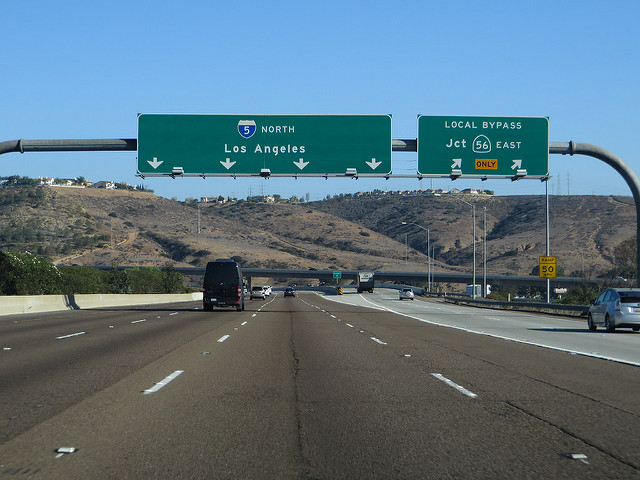
By Jeff Davis
“Ironic Icons, The Art of Valentin Popov” is on exhibit at the Long Beach Museum of Art (LBMA) through March 19. The majority of the more than 60 works on display combine images of American superheroes and corporate logos such as Batman, Wonder Woman, Spiderman, Mickey Mouse, Facebook, etc.) with religious iconic art from the artist’s native Ukraine. Popov’s works are loaded with irony, satire and subtle humor that will keep your mind turning. Just like the live action 1960s Batman TV series and today’s Family Guy show, the art is satisfying on several levels. Children will enjoy the cartoon nature while adults will love the dark humor and subversion – not to mention the superb artistic quality.
The focal point of the paintings in the main room is a large work on aluminum panel entitled “Early Morning,” which is based on the 1817 work “L’Amour et Psyche” by the French painter Francois-Edouard Picot. Popov’s version shows Batman (as an older Cupid) leaving the bed of his lover after a romantic encounter. His lover is still in repose on the bed, unaware as Batman apparently sneaks off to help Robin in some sort of scuffle evidenced by the Bat Signal on the bedroom wall and a cartoon speech bubble (“HAVE A BELT ON ME CHUM!) combined with a classic “Kapow!”
The painting illustrates Popov’s exquisite technique. The “canvas” is covered with crackling as if aged for a few centuries and Batman’s lover’s face is a finely detailed portraiture itself, while the comic portion of the painting takes on an almost Lichtenstein cartoon-like feel. In other works, Popov inserts the aforementioned super heroes as well as a few corporate symbols in the place of the Virgin Mary, saints, Christ and angels in paintings associated with Eastern Orthodox Christianity.
Batman is Popov’s go-to super hero in the majority of the paintings. Unlike the rest of the masked gang, the Caped Crusader has no superpowers, only an identity hiding bat cowl, skin-tight costume, man-made weapons and his keen mental agility keep him one step ahead of the bad guys. Like Jesus and the rest of the saints and angels, he fights for good against evil, protects the weak and is adored by the masses. However, unlike figures in organized religion, St. Batman cannot be corrupted or used for power and control of others; his image cannot be tarnished. His followers will never start a war or persecute non-believers.
The exhibit continues with an entire room filled with ornate silver and gold clad book covers resembling the gilded versions one might expect of illustrated manuscripts seen at The Getty. The covers are again filled with the requisite superheroes, corporate logos and thankfully no Kardashians (false idols). While it is definitely humorous and thought provoking, would some consider it sacrilegious? I don’t think so, although the small “Adults Only” alcove of the exhibit has a set of 17 silver gelatin photographs depict The Crucifixion of Saint Batman, 1994 which might be a bit much for some. The mock crucifixion of a naked Batman (portrayed by Popov) is definitely committing to your artistic process.
Finally, there is an entire room filled with the History of St. Batman, whom much of the exhibit revolves around. It includes 15 engravings from the 1850s which have had intricately detailed acrylic embellishments added to them. Again Popov is showing off some of his technical skills here; in most cases you have to look closely to see some of the subtle inclusions. It’s almost a Where’s Waldo searching for the Batman in some of the etchings. Bat Alert: Drop your remote control and go see Popov’s art now!

“Commerce in View” is also on exhibit at the LBMA through March 19. The photographs of Tom Paiva and William Livingston feature the heavy industry of the Port of Long Beach. The port is actually the second largest container port in the United States after Los Angeles; and you can see its cranes and docks from the panoramic second floor windows of the Museum. Both Paivia and Livingston’s photographs are beautiful high contrast, color saturated images of deserted portions of the port taken in the evening or nighttime.
Livingston uses a pinhole camera to capture his large-scale views of the harbor focusing on the hardedge architecture of ships and buildings producing images of infinite depth of field and extreme focus. Pavia on the other hand works with a large-format camera focusing on the depopulated spaces of the port at twilight or nighttime. His photographs achieve great nuance and detail capturing the artificial light in stunning hues. Livingston and Pavia’s work presents a stark contract to the busy, grey, dirty, and gritty reality of the actual port. Even when viewed on the brightest, clearest Southern California day, the port itself will never hold a candle to their photographs.



